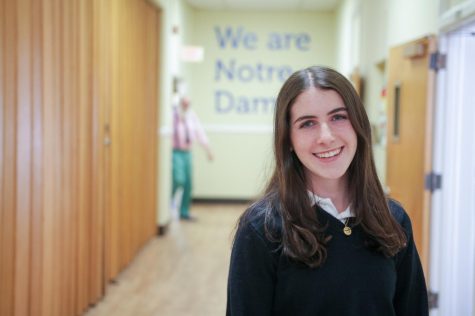Daylight saving time should be made year round
The Catalyst / Kathleen Davidson
“Spring forward” and “fall back,” are sayings that Americans are all too familiar with. They are associated with daylight saving time, which begins at 2 a.m. on the second Monday in March and ends on the first Sunday in November. It is a period of time where clocks are set forward to create more daylight later in the day. Over time, the practice of changing clocks twice a year has received a lot of resistance from people around the world who argue that its faults outweigh its benefits.
Furthermore, there is debate over if the U.S. were to get rid of this twice-annual shift, whether the permanent system of time would be standard time or daylight saving time.
From the perspective of high school students, converting to year-round daylight saving time would be very beneficial because we would not have to endure the clock change twice a year and would avoid the struggles associated with shorter daylight hours.
During the initial days and even weeks after switching the clocks in the fall and the spring, people often struggle with feeling disoriented as they adjust to the new time, due to an out of sync internal body clock.
Not only is it a matter of inconvenience, but it is also a risk to our health and safety. For example, according to Clinical Associate Professor Dr. Susheel at the Case Western Reserve School of Medicine, “The loss of sleep has been shown to result in an increase in car accidents during the week after the change to [daylight saving time], and there can be an approximately 20 percent increase in patient safety-related incidents associated with human error.”
Abolishing the seasonal time shift is a widespread shared opinion. In fact, 71% of Americans agree that we should stop adjusting the clocks twice a year, according to a poll conducted by the Associated Press-NORC Center for Public Affairs in 2019. What people do not agree on, however, is which time system should exist year round.
The United States Senate declared their opinion on the topic in March of 2022, when they passed the “Sunshine Protection Act” with unanimous approval, which would make daylight saving time the permanent time system starting in November 2023. The bill has not been approved in the House of Representatives and would still require the approval from President Biden if it were to pass. With all of the drawbacks experienced with standard time, year round daylight saving time would be highly preferable, and hopefully this bill will pass in order to make that happen.
In standard time during the winter months, the sun sets early, creating a lot of different issues for highschool students.
For NDB sports teams, being in standard time means finishing practices and games when it is very dark outside, which poses a risk to all. Freshman and sophomores who cannot yet drive must wait outside in the dark for their rides to arrive. Juniors and seniors who drive themselves have to drive home in the dark, which puts them at a higher risk of accidents.
Many NDB sports teams and extracurricular activities modify their schedules in order to fit in everything that must be done before it gets too dark out. That either means starting practices and games early, and missing class instruction, or ending practices and games early, and missing out on valuable playing time. The teams that practice on NDB facilities without lights try to avoid this problem by finding a new location to practice, but this is a difficult task.
The changed team schedules does not just impact the players’ athletically, but academically as well.
Senior Kassie Hickson reflected on how this standard time creates academic challenges, mentioning that she would benefit from a decision to make daylight saving time permanent.
“If [we have] a [soccer] game at 3 p.m. we have to be there at 2 p.m., which means I have to leave class at 1:45 p.m., said Hickson. “I’m missing an entire block [of instruction]. I have to teach myself the material [I missed] which is super difficult.”
Sleep experts say that darkness signals melatonin production, which helps us get sleep. But, for highschool students with a lot of work to complete in the evenings, getting tired earlier makes it harder to focus on schoolwork and many end up going to bed later as a result. So really, what is claimed to be helping our sleep is actually hurting sleep schedules.
“…[C]oming home and sitting in the dark is not helpful for my ability to focus or my energy levels. I wish that we would keep it light outside a little bit longer all year round,” said senior Lauren Fitzgerald.
For teenagers, quality sleep is important for emotional development, physical and mental health, and school performance. Switching to daylight saving time permanently would allow for high school students across the country to get better sleep consistently and avoid inconveniences of changing the clocks.

Genevieve is a senior at NDB and is one of the Opinion Editors for the Catalyst. This is her first year on the Catalyst Staff.
She plans to major in...






